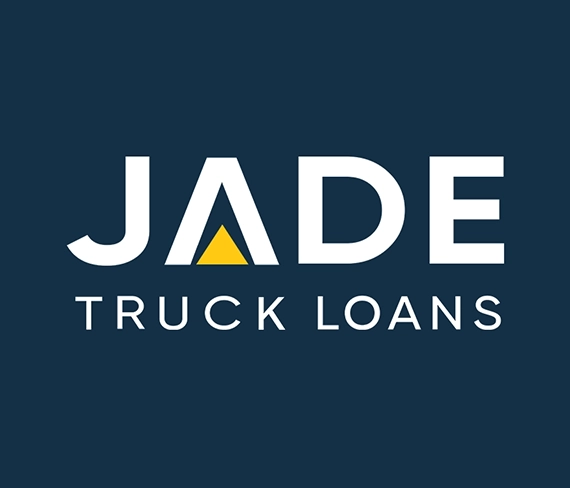Asset depreciation is a term widely used in commercial finance, including when financing assets such as heavy vehicles. While most business operators may have some idea of what depreciation is, the specific details may not be as clear. Jade Trucks Loans provides a basic explainer of asset depreciation as a tax deduction when financing heavy vehicle acquisitions. A basic guide which may give business owners a better understanding of asset depreciation and assist with making more confident, well-informed decisions when taking on finance.
The concept is reasonably straightforward and easy for most operators to grasp. The complexities arise in calculating the value of depreciation on a certain asset by a specific business set-up. The Australian Taxation Office has rules and regulations around calculating depreciation as an allowable deduction. It is complicated, so calculations are best left to the business’ accountant when preparing the annual accounts. What we will strive to achieve in this piece, is as simple an explanation as possible of asset depreciation and how it works with heavy vehicle loans.
What is asset depreciation?
Depreciation is essentially devaluation. The drop in value of assets over time. The decline in an asset’s value over its effective life or working life. From the time a heavy vehicle is used, its value starts decreasing. To be considered for tax purposes, the asset must be used for and by a business.
When a vehicle is used for the first time is referred to as the ‘depreciating asset start time’. The time over which a vehicle is depreciated is the ‘effective’ or ‘working life’, which may be the ownership period.
The depreciated value of a vehicle is calculated each year, based on the value of the asset in that year. As the value of the vehicle declines each year, so will the depreciated value – the amount which can be used as a tax deduction. The Australian Taxation Office sets the rules and regulations around depreciating business assets.
At times the Government will introduce special measures around depreciating assets to stimulate business activity. As a stimulus measure used during the COVID period, IAWO (Instant Asset Write-off), aka temporary full expensing, will be familiar to many business operators. Rather than the annual depreciated value of an asset being tax deductible each year over many years, IAWO allowed for the full value, usually the purchase price, to be deducted in the year of the purchase.
Asset Depreciation as a Tax Deduction with Financing
In order to be considered as an asset for tax deductible depreciation, an asset must be owned by the business. It can be under finance but must appear on the balance sheet of the business. The business must have ownership title, even if a lender holds a security claim over the asset.
This is a feature of Chattel Mortgage and Commercial Hire Purchase credit facilities, where the business takes ownership immediately on settlement, and the lender has the guarantee of the vehicle as security. Leasing and Rent-to-Own facilities do not include the ability to depreciate a vehicle as with these credit facilities, the lender retains ownership of the vehicle, and it is not posted to the balance sheet of the buyer.
With Chattel Mortgage and CHP, the depreciated value of the vehicle is calculated each year, and that amount is deducted from taxable income as an expense. The amount deducted will reduce each year, but by the end of the effective life, the full purchase value should have been expended as a tax deduction.
Note that the value used to calculate depreciated value is the purchase price, not the amount of the finance including interest. If a downpayment is made on the vehicle and the loan is for less than 100% of the purchase price, depreciated value is still calculated on 100% of the purchase price, subject to ATO rulings.
This way of realising a tax deduction on an asset does compare similarly with Leasing and Rent-to-Own where the repayments are fully tax-deductible. Chattel Mortgage and Hire Purchase also allow for the interest portion of repayments to be deducted.
Calculating Asset Depreciation
Calculating depreciation is complex as the ATO provide two methods – the diminishing value and the prime cost methods. Those interested in calculating the depreciation of a truck they are considering purchasing can refer to the ATO assets guide. But the process is best left to accountants. Simplified rules do apply to small businesses.
Depreciated value does decrease by a constant amount each year. The depreciated value in year one is deducted from the total value when calculating depreciated value for year two, and so on. So, the amount depreciated and deducted from taxable income reduces each year over the effective life of the vehicle.
Eligible Businesses and Eligible Vehicles
All commercial entities and all heavy vehicles may be eligible for financing with asset depreciation as a tax deduction with Chattel Mortgage and Hire Purchase. The decision as to suitability may rely on the accounting method used and the preference of the business to have an asset with the value of a new vehicle on their balance sheet. We recommend speaking with an accountant to determine if financing with a credit facility offering asset depreciation is right for your business.
To secure Chattel Mortgage or Hire Purchase truck finance for tax-deductible asset depreciation, contact Jade Truck Loans on 1300 000 003 for affordable used truck finance.
DISCLAIMER: THIS INFORMATION IS ISSUED PURELY FOR THE PURPOSE OF GENERAL INFORMATION PROVISION. IT IS NOT TO BE TAKEN AS THE ONLY SOURCE OF INFORMATION FOR BASING FINANCIAL DECISION-MAKING. THOSE REQUIRING FINANCIAL GUIDANCE AND ADVICE SHOULD CONSULT WITH THEIR FINANCIAL CONSULTANT OR ADVISOR. NO LIABILITY IS ACCEPTED FOR ANY MISREPRESENTATION OF POLICIES, DATA OR ERRORS IN THIS CONTENT.


 " alt="">
" alt="">